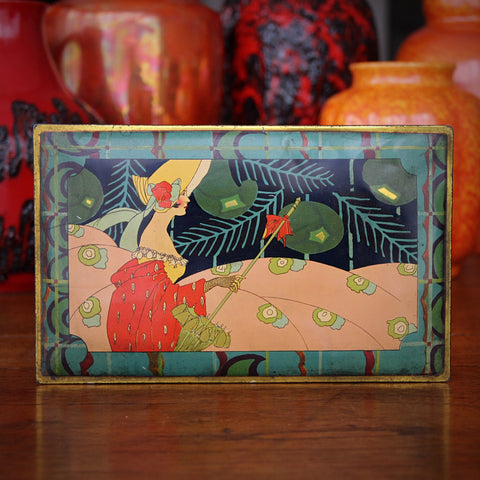In the late Nineteenth and early Twentieth Centuries, Pochoir printmaking was a popular technique, especially in Paris. The French word "pochoir" (pronounced poe-SCHWA) literally translates to "stencil." In this technique, a stencil is made to create a limited number of fine-lined prints—which are then hand-colored. Sometimes a collection of the limited edition plates, related in theme, were bound in a portfolio (for example, pochoir prints of the Ballets Russes). Although the pochoir stencil-print method allowed prints to be duplicated quickly, the high level of handcraft allowed each one to be considered an original work. And, as the ink was daubed over the paper stencil, it would create a varied, hand-drawn look to the line work. Of course, the extensive hand-coloring also added to the bespoke nature of each piece.
The characteristics of a pochoir print—fine line work, flat graphic fields of color—was emulated by the artists who produced "fashion plates," those early, printed renderings which showed (advertised to) consumers the latest fashions (before the widespread distribution of photographic fashion magazines).
The steel, lidded candy box, shown above, captures the spirit of a late Art Nouveau fashion plate—and is also reminiscent of the pochoir print style. Of course it was produced in a specialized, mass-produced manner, transposing the image onto the metal. But the aesthetic of the artwork is true to the style of fashion plates and pochoir printmaking. Click on the photo above to learn more about it.
Though our Greenwich Village store is now permanently closed, LEO Design is still alive and well! Please visit our on-line store where we continue to sell Handsome Gifts (www.LEOdesignNYC.com).
We also can be found in Canonsburg, Pennsylvania at The Antique Center of Strabane (www.antiquecenterofstrabane.com).
Or call to arrange to visit our Pittsburgh showroom (by private appointment only). 917-446-4248


